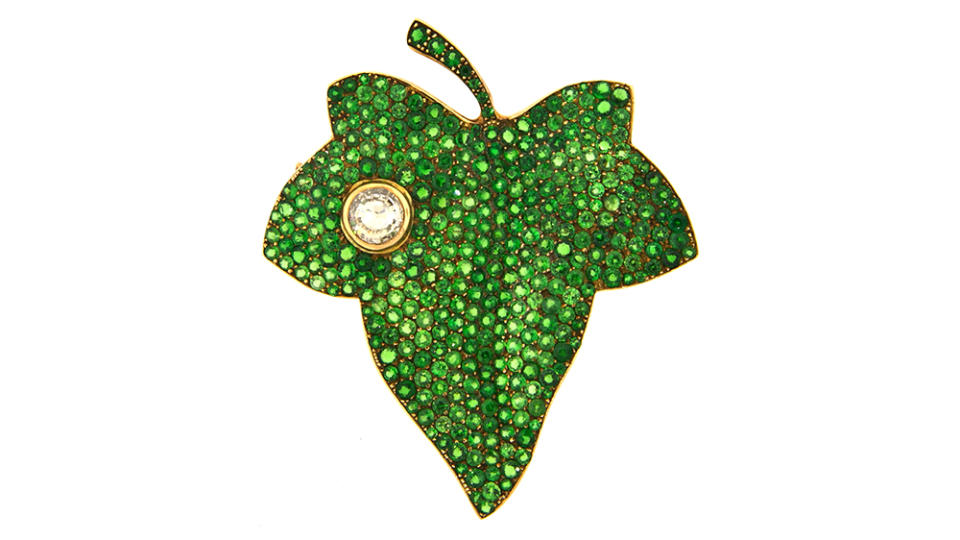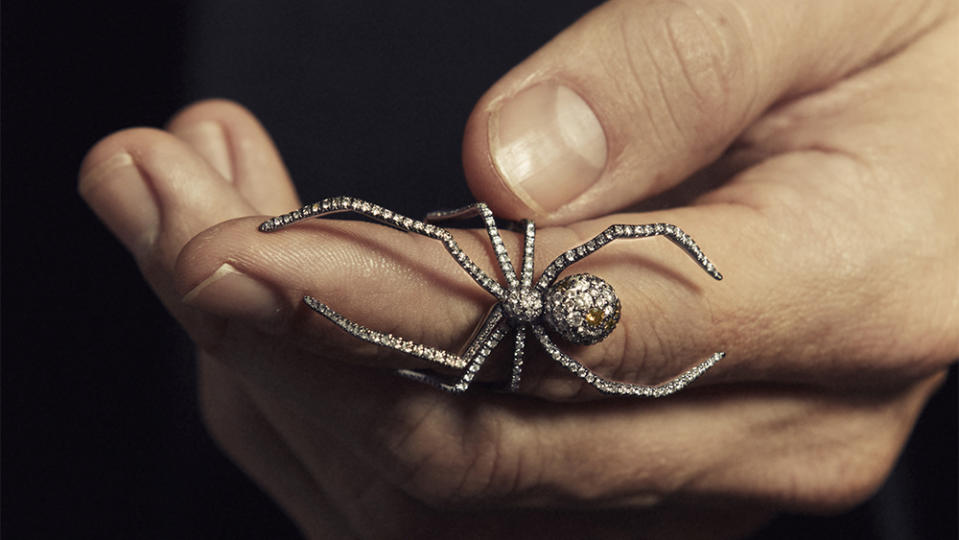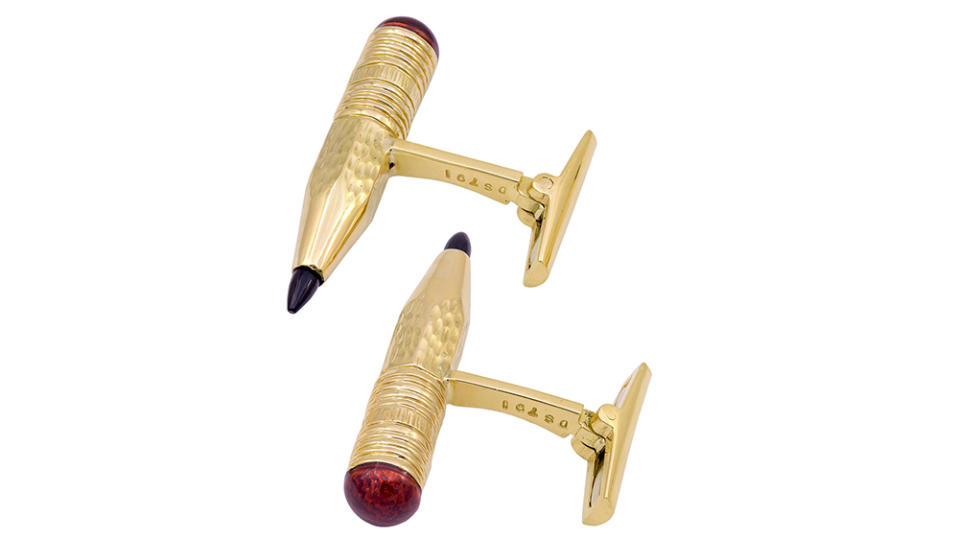Why Stylish Guys Are Wearing Brooches, Pearl Necklaces, and Lavish Jewelry Like Never Before

For the better part of human history, men’s jewelry has been unequivocally in. That’s because power has long been synonymous with bejeweled adornment, from ancient Sumerian rulers buried in their gold chains to Indian maharajas festooned with garlands of rubies and diamonds. But the French Revolution marked a change, ushering in an era when men began to favor more utilitarian forms of dress. It wasn’t until the 1970s that men in America were encouraged to show their more ornamental sides again, from colorful suiting to long hair to necklaces.
But if watching male celebrities on the red carpet or NBA tunnel walks is your thing, you’ll know that men’s jewelry is in the swing of a full-blown renaissance. If you need a refresher, recall Game 2 of the National League Championship Series in 2021 when Joc Pederson, an outfielder for the Atlanta Braves, caused a stir by wearing a strand of pearls that could have come straight off Audrey Hepburn. Today, that would hardly raise an eyebrow.
More from Robb Report
Cartier Just Opened a New Boutique in Downtown N.Y.C. Here's a Look Inside.
Who Needs Wrist Candy? Rihanna Wore a $400,000 Jacob & Co. Ankle Watch to the Las Vegas Grand Prix

Frank Everett, Sotheby’s vice chairman of jewelry and the man behind the #bringbackthebrooch movement, says “there’s no turning back” from the current moment of men embracing jewelry—and not just what’s traditionally considered men’s jewelry, either. “There’s so much crossover gender-bending now,” Everett says. “People should just wear what they love.”
With that in mind, in September, Everett did something no one in the auction world had done before, curating a selling exhibition in New York dedicated to the evolution of men’s jewelry from the mid-19th century to the present day. Called For the Boys: A Jewelry Exhibition, the show featured 100 pieces ranging in price from $3,000 to $300,000, including an antique diamond brooch from the Venetian period, an 18-karat-gold and black-enamel necklace by Cartier, and a David Yurman gold intaglio signet ring.

Despite the name, the exhibition also featured women’s pieces, including an 18-karat-gold, diamond, and ruby Bulgari Serpenti necklace. But it just served to highlight the degree to which men have recently been foregoing the usual beaded bracelets and dog-tag pendants in favor of jewelry that reads as, well, jewelry: gem-forward, often dainty, sometimes both.
It follows the trend in men’s watches toward the small and delicate. Take actor Timothée Chalamet, spotted in New York City over the summer wearing the Panthère de Cartier Mini, part of a wave of high-profile celebrities who have helped make feminine sizing and styling a big thing in men’s wristwear.

At Mikimoto, the phenomenon has meant growing demand for pearl jewels to be worn by guys. “Little by little, men are wearing simple strands and brooches, too,” says Noriko Otsuka, senior vice president of the merchandise division for the venerable Japanese pearl brand. Otsuka says Mikimoto doesn’t actually assign gender to its pieces. “However,” she says, “we’ve launched collections that are more masculine and versatile, including Passionoir with black South Sea cultured pearls set in black rhodium-plated silver and 18-karat white gold. We feature male models in our campaign to emphasize the pearls’ versatility.”
From pearls to pins, the exploding interest in and sales of men’s pieces is enough to make you wonder whether the term “men’s jewelry” is on the verge of becoming obsolete. Everett certainly thinks so. “It’s just jewelry,” he says.
Best of Robb Report
Sign up for Robb Report's Newsletter. For the latest news, follow us on Facebook, Twitter, and Instagram.
